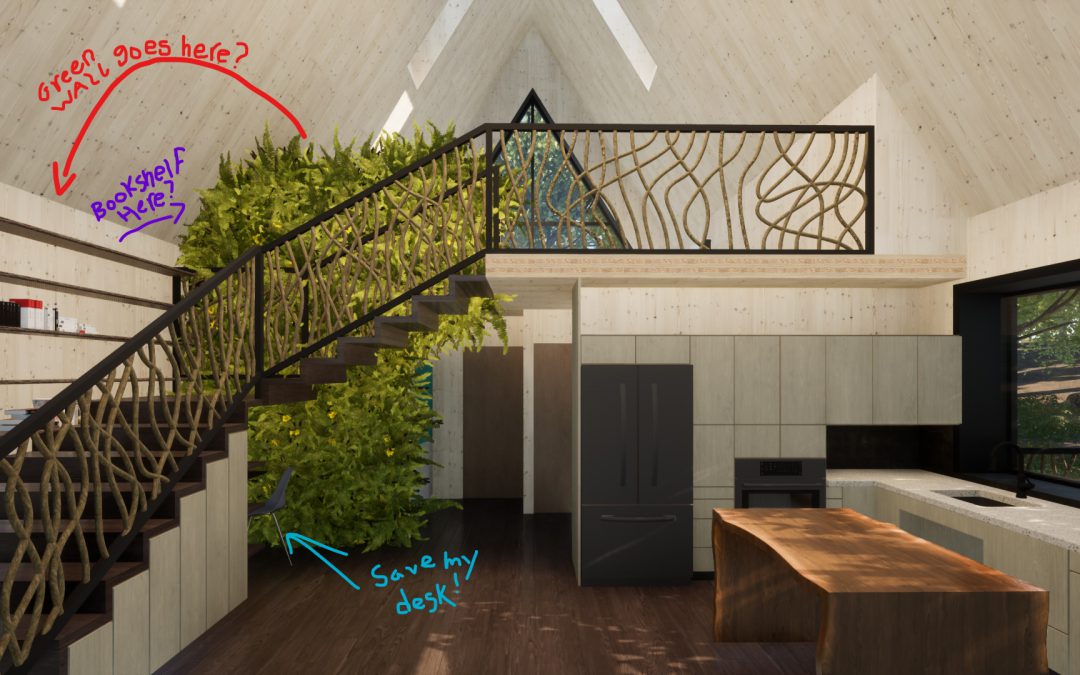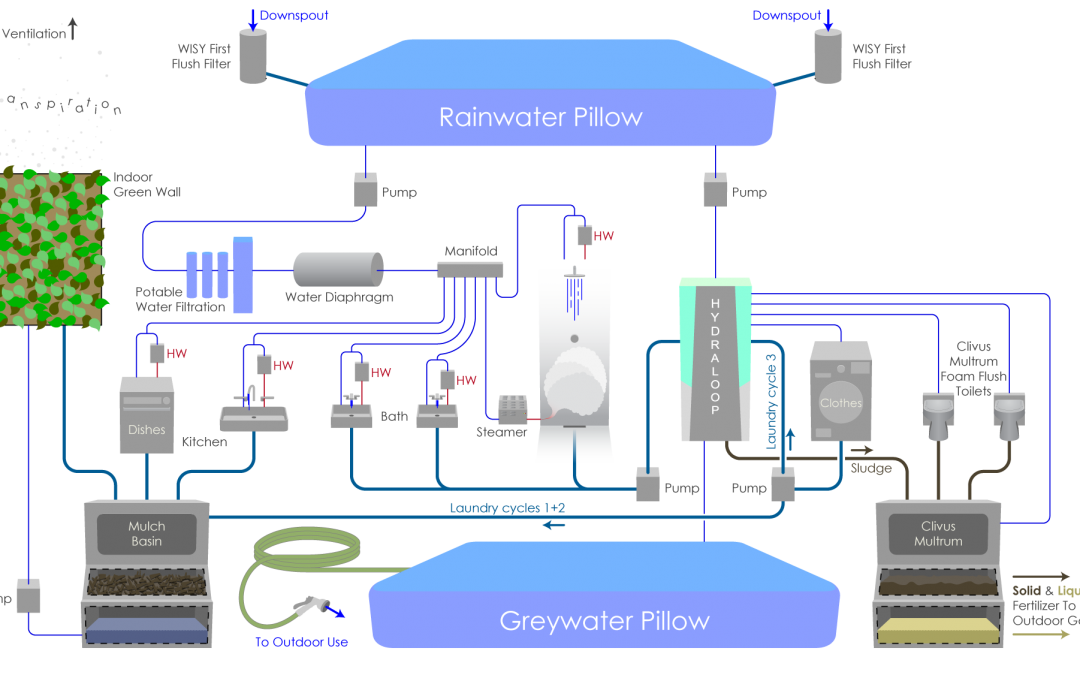
by William | Jun 30, 2021 | Net Zero
Dear Readers,
We have a slight conundrum. Nothin’ new…just thought I’d start working it out through writing, while simultaneously perhaps picking your brains for ideas 🙂
William and I have been working diligently to not only find ways to cut our overall water consumption so that we can comfortably rely solely on rainwater collection for all our potable and non-potable needs, but we have also been attempting to treat all of our wastewater on-site while still meeting PA DEP codes. If you have read “The Water Cycle of the Seed III?” then you are familiar with our aim to keep all of the treatment of the water within our home’s envelope in order to achieve our end goals and comply with said code.
Whelp, the PA DEP took the time to look at our home’s nifty water cycle diagram, and they were pretty unofficially ok with it! We will have to pursue an experimental permit, and verify a couple of things with our local code officials…but…overall, it was at the least a ‘green light’ to continue chuggin’ along with our current plan and see what becomes of it. Which is super exciting!!
However, that does lead to this latest conundrum: Given the ‘go ahead,’ we took a closer look at our mulch basin. We quickly realized that our mulch basin is going to receive a disproportionately large amount of greywater in need of treatment each day, in comparison to the amount of water that our prospective indoor green wall is actually going to need.

by William | Apr 28, 2021 | Net Zero
Dear Readers,
I think this is Round III of our plan to harvest and treat all of our water on-site…it may actually be round IV…or V. In truth, what version of the ideal we have bounding about in our brains does not matter. What matters, is this is what we have officially just shipped off for interpretation by code!
The goal we have set for ourselves is to meet the Water Petal as set by the Living Building Challenge, while also meeting PA Code. We want to not only maintain, but enhance, the safety and health of our surrounding natural environment and communities.
What you are about to read is essentially how we explained our system to the DEP. However, when I had some loved ones proof-read our email, they said it was overwhelming and boring.
So, I still sent our extensive email away to code.
While it is still certainly overwhelming, code does not care if it is boring. They just want to do their job and make sure we don’t jeopardize the health or integrity of our environment or neighbors.
But, to make it interesting for those who do find this overwhelming and boring, I am going to explain it in the context that you are a little, adorable, droplet of water. While small in stature, you are incredibly significant to our family’s, and the Land of the Laurel’s, survival.
My dear little droplet, your life has no real beginning or end. You just are. You belong to, and are a cycle that determines the life or death of every living being on this planet. For our story, we will begin with one of your many falls.
All excited and condensed with so many other droplets, it is now the time for you to let the weight of your condensation be pulled by gravity to the earth. Like a sneeze that has just built up for way too long, you finally let it go!
WeeeEEEEEEEEEEEEEEEEE!!!!!

by William | Dec 9, 2020 | Net Zero
Dear Readers,
Thank you so much for sticking with us. I know our blogs have been a lot of research and ideas…although we just purchased a piece of land, we have a lot of design work to do before we start building anything!
As we began with Living Building Challenge: The Petal of Place, we want our lil’ home, The Seed, to meet Living Building Challenge standards (in addition to PHIUS, of course). In order to meet those standards, the home or building must adhere to the seven ‘petals’ and their imperatives. I know the term ‘petals’ sounds cheesy, but they do set a high expectation for how homes are built, lived in, and what they give back to the ecosystems they are located in.
The Water Petal alone is going to be a tough one to meet. However, it is a conundrum that we have already been pondering. Our goal is to rely totally off of our rainwater pillow for all of our potable and non-potable water needs. This, in turn, means that we need to live so water consciously that we are 100% all the time, 7 days a week, 365 days a year, prepared for a drought. It is not going to be easy, but if you have read our composting toilet and recirculating shower blogs, then you know that we have a few ideas bounding about. But are these ideas enough for us to meet the Living Building Challenge’s criteria for the Water Petal?



